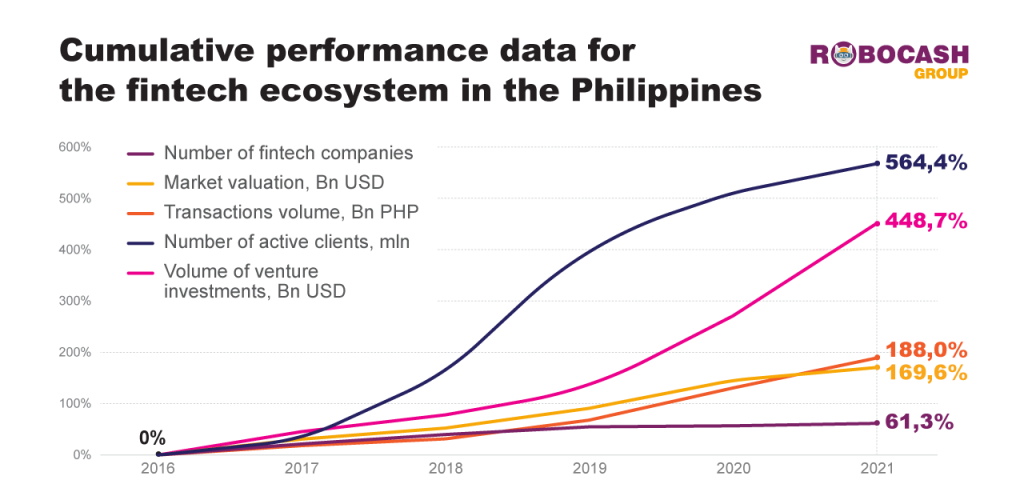15 out of 20 FinTech companies in the Philippines close their doors, unable to withstand the competition. Nevertheless, the local FinTech landscape remains underinvested. By 2024 the FinTech market in the Philippines should grow to 44 Bn USD, estimated by the analysts of the financial holding Robocash Group.
The number of FinTech companies has grown from 126 to 222 entities since 2016 in the Philippines. On average, about 15 to 20 new startups appear each year, while 10 to 15 companies close their doors, unable to withstand the competition. The largest growth occurred in the mobile wallets, online payments and wire transfers segments.

The number of FinTech active clients has grown from 1.7 in 2016 to 54.1 million people in 2021, with an increase in the volume of transactions by 2 trillion 996 billion PHP. The penetration of FinTech services reached 48.7% in 2021, making it almost every second Filipino currently using at least one FinTech service.
The Philippine FinTech market valuation has seen the entire marketwide solid growth by 224%, from 3.4 to 11 Bn USD. However, the industry is still maturing, attracting larger interest and thereby, receiving support from stakeholders. If this remains unchanged, by 2024 the Philippine FinTech market should increase from 11 to 44 Bn USD.
“Since the pandemic broke out, 12 million Filipino citizens have used the Internet for the first time. Still, despite the rapid growth of a number of digital consumer services, the region has yet to overcome several socio-economic hurdles on the way to the full transition to coin-less and cashless society. The Philippines has the lowest per capita GDP of the six largest ASEAN economies, resulting in the lowest per capita spending on internet goods and services in the region, at just $145 versus the regional average of $337”, explained the analysts of the Robocash Group.
“The local FinTech landscape remains underinvested. The government is doing its best to promote the development of the fintech ecosystem in the country, creating special “channels of interaction” between the state and the private sector”, they added.
